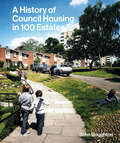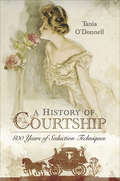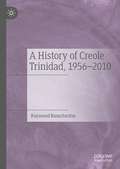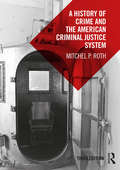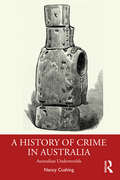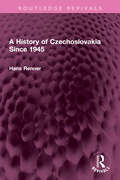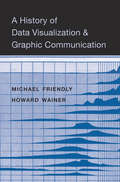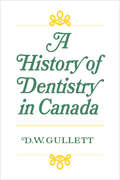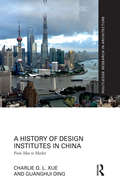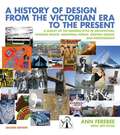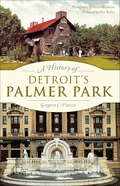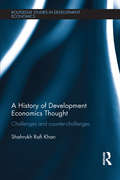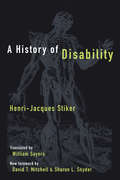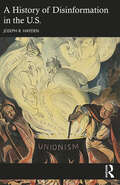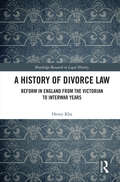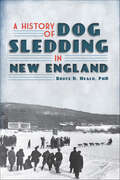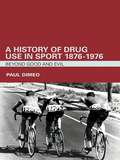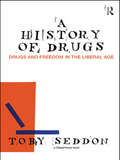- Table View
- List View
A History of Council Housing in 100 Estates
by John Boughton‘It was like heaven! It was like a palace, even without anything in it … We’d got this lovely, lovely house.’ In 1980, there were well over 5 million council homes in Britain, housing around one third of the population. The right of all to adequate housing had been recognised in the 1948 Universal Declaration of Human Rights, but, long before that, popular notions of what constituted a ‘moral economy’ had advanced the idea that everyone was entitled to adequate shelter. At its best, council housing has been at the vanguard of housing progress – an example to the private sector and a lifeline for working-class and vulnerable people. However, with the emergence of Thatcherism, the veneration of the free market and a desire to curtail public spending, council housing became seen as a problem, not a solution. We are now in the midst of a housing crisis, with 1.4 million fewer social homes at affordable rent than in 1980. In this highly illustrated survey, eminent social historian John Boughton, author of Municipal Dreams, examines the remarkable history of social housing in the UK. He presents 100 examples, from the almshouses of the 16th century to Goldsmith Street, the 2019 winner of the RIBA Stirling Prize. Through the various political, aesthetic and ideological changes, the well-being of community and environment demands that good housing for all must prevail. Features: 100 examples of social housing from all over the UK, illustrated with over 250 images including photographs and sketches. A complete history, dating from early charitable provision to ‘homes for heroes’, garden villages to new towns, multi-storey tower blocks and modernist developments to contemporary sustainable housing. Iconic estates, including: Alton East and West, Becontree, Dawson’s Heights, Donnybrook Quarter, Dunboyne Road and Park Hill. Projects from leading architects and practices, including: Peter Barber, Neave Brown, Karakusevic Carson, Kate Macintosh and Mikhail Riches.
A History of Courtship: 800 Years of Seduction
by Tania O'DonnellTania O’Donnell takes the reader on a journey from medieval Courtly Love, through to the sexual license of the Restoration, and Victorian propriety. Pick up historical ‘dating tips,’ from how to court (or be courted), write romantic love letters, give and receive gifts, propose and pose as a sighing swain.The book takes a historical approach to the problem of finding a mate, with case studies of classic romantic mistakes and plenty of unusual tales. In the 14th century young men tried to impress the ladies with their footwear, donning shoes with pointed toes so long that they had to be secured with whalebone—presumably because size mattered!A History of Courtship is an entertaining and enlightening look at seduction over the centuries.
A History of Courtship: 800 Years of Seduction Techniques
by Tania O'DonnellExplore 800 years of lust, love, and loss.The author takes the reader on a journey from medieval courtly love, through to the sexual license of the Restoration, and Victorian propriety. Pick up historical 'dating tips', from how to court (or be courted); write romantic love letters, give and receive gifts, propose and pose as a sighing swain. A historical approach to the problem of finding a mate, with case studies of classic romantic mistakes and plenty of unusual tales. In the fourteenth century young men tried to impress the ladies with their footwear, donning shoes with pointed toes so long that they had to be secured with whalebone presumably because size mattered!
A History of Coventry
by David McGroryThe author, well known as the writer of more books on the city than anyone, explores Coventry's history from Roman times through Earl Leofric, Godiva and the Norman castle, to monastic houses, including St Mary's priory.Coventry has a rich medieval heritage, and rose to power in the Wars of the Roses, when the royal court moved there. Major themes in the city's history are discussed, through previously unknown source material, covering the Siege and Civil War, education, health, the church, crime and punishment, and industries from medieval weaving to modern car-building.
A History of Credit and Power in the Western World
by Scott B. MacDonaldThe end of the Cold War put the planet on a new track, abruptly replacing the familiar world of bipolarity, red phones, and intercontinental ballistic missiles with the strange new world of the Internet, e-commerce, and Palm Pilots. The "New World Order" was defined by a U.S.-led war against Iraq, bloody ethnic strife in Bosnia and Rwanda, and religious turmoil in Central Asia. This evolving global system, however, overlooked the powerful role of credit, which functions as a critical building block for developing greater national and individual wealth. This volume examines the evolution of credit in the Western world and its relationship to power. Spanning several centuries of human endeavor. it focuses on Western Europe and the United States and also considers how the Western system became the global credit system. Six major themes run throughout: (1) the direct relationship between credit and power; (2) different kinds of political power promote different kinds of economic behavior; (3) various societal and cultural groups were often more successful in mingling credit and political power; (4) the Western credit system evolved in tandem with the development of the nation-state; (5) historically, there has been a pattern of financial crises; (6) credit spread from being the privilege of the wealthy and powerful to being available to vast numbers. MacDonald and Gastmann have broken history into five periods, ranging from early pre-modern, defining the earliest references to banking and credit as exemplified by the Code of Hammurabi, circa 1726 BC, through the Roman Empire with its creation of money and growing use of credit in trade, the barbarian invasions of the 11th century which led to a breakdown in credit networks in the West, through the establishment of the Italian city-states, to the modern period which incorporates the rise of credit in the Low Countries in the 1500s and extends through the rise of London and New York as the major international credit hubs.
A History of Creole Trinidad, 1956-2010
by Raymond RamcharitarThis book offers a history of post-Independence Trinidad and Tobago. It explores how culture and politics have operated in tandem to shape the society. Drawing on a wide range of sources, including literature, government reports, official statistics, the press and the Carnival, it critically analyses the popular conception of creolization as the driving force in modern Trinidad and Tobago. Ultimately, the book examines the way in which Trinidad and Tobago's unique ethnic and political ecosystems contribute to its national character.
A History of Crime and the American Criminal Justice System
by Mitchel P. RothThis book offers a history of crime and the criminal justice system in America, written particularly for students of criminal justice and those interested in the history of crime and punishment. It follows the evolution of the criminal justice system chronologically and, when necessary, offers parallels between related criminal justice issues in different historical eras. From its antecedents in England to revolutionary times, to the American Civil War, right through the twentieth century to the age of terrorism, this book combines a wealth of resources with keen historical judgement to offer a fascinating account of the development of criminal justice in America. A new chapter brings the story up to date, looking at criminal justice through the Obama era and the early days of the Trump administration. Each chapter is broken down into four crucial components related to the American criminal justice system from the historical perspective: lawmakers and the judiciary; law enforcement; corrections; and crime and punishment. A range of pedagogical features, including timelines of key events, learning objectives, critical thinking questions and sources, as well as a full glossary of key terms and a Who’s Who in Criminal Justice History, ensures that readers are well-equipped to navigate the immense body of knowledge related to criminal justice history. Essential reading for Criminal Justice majors and historians alike, this book will be a fascinating text for anyone interested in the development of the American criminal justice system from ancient times to the present day.
A History of Crime in Australia: Australian Underworlds
by Nancy CushingThis book provides a lively and accessible account of Australia’s most prominent crimes and criminals of the nineteenth and twentieth century and offers an informative background for those seeking to understand crimes committed today. A History of Crime in Australia examines the imposition of English law on this ancient continent, and how its operation affected both transported offenders from Great Britain and Ireland, and the Aboriginal and Torres Strait Islander peoples whose own systems of Law were overlaid. Drawing upon cutting-edge research in the field, original work by the author, and essays from leading crime history researchers, it addresses the question of whether there was an Australian underworld. In doing so, it provides background for well known offenders including bushranger Ned Kelly and the razor gangs of the 1920s and for sensational crimes like the Mount Rennie Outrage, the Pyjama Girl Mystery and the Shark Arm Murder and the miscarriage of justice following the disappearance of Azaria Chamberlain at Uluru in 1980. Through these case studies, the book draws out points of tension and cohesion within Australian society, exposing the enduring anxiety around those who were considered to be outsiders, and how the criminal justice system was used to manage these concerns. This book includes a guide to conducting research in the field of Australian crime history and sources for further study. Designed as an introductory text for students, this book will be of interest to those studying criminology and crime history, and anyone who would like to deepen their understanding of crime’s place in Australia’s social and cultural history.
A History of Czechoslovakia Since 1945 (Routledge Revivals)
by Hans RennerFirst published in 1989, A History of Czechoslovakia Since 1945 is a comprehensive account of Czechoslovakia under Communist rule, tracing events from 1945 to 1990. The author focuses on the last twenty years in particular, when the Prague Spring offered a brief period of liberalization, but was followed by harder times, with the hope of change fading, and society becoming paralyzed. Dr. Renner describes vividly the country’s fortunes under the Soviet rule of Stalin and Brezhnev, and how it pioneered the policy of glasnost during the Prague Spring of 1968. The book concludes with a special look at the influence of Gorbachev’s glasnost on the regime of Czechoslovakia. Dr. Renner combines a chronological overview with a passionate yet scholarly discussion of underlying political, economic, and cultural issues and developments, making this book invaluable as an authoritative and lucid account of Czechoslovak history, as well as an explanation of the role this country and in events played in the shaping of modern Europe.
A History of Czechs and Jews: A Slavic Jerusalem (Routledge Jewish Studies Series)
by Martin WeinWas Israel founded by Czechoslovakia? A History of Czechs and Jews examines this question and the resulting findings are complex. Czechoslovakia did provide critical, secret military sponsorship to Israel around 1948, but this alliance was short-lived and terminated with the Prague Trial of 1952. Israel’s "Czech guns" were German as much as Czech, and the Soviet Union strongly encouraged Czechoslovakia’s help for Israel. Most importantly however, the Czechoslovak-Israeli military cooperation was only part of a much larger picture. Since the mid-1800s, Czechs and Jews have been systematically comparing themselves to each other in literature, music, politics, diplomacy, media, and historiography. A shared perception of similar fates of two small nations trapped between East and West, in constant existential danger, helped forge a Czech-Jewish "national friendship" amid periods of estrangement. Yet, this Czech-Jewish national friendship, an idea that can be traced from Masaryk and Kafka via Weizman and Ben Gurion to Havel and Netanyahu, was more myth than reality. Relations were often mixed and highly dependent on larger historical developments affecting Central Europe and the Middle East. As the Czech Republic emerges as Israel’s main EU ally, this book provides a timely analysis of this old-new alliance and is essential reading for students and scholars with an interest in History and Jewish Studies.
A History of Data Visualization and Graphic Communication
by Howard Wainer Michael FriendlyA comprehensive history of data visualization—its origins, rise, and effects on the ways we think about and solve problems. With complex information everywhere, graphics have become indispensable to our daily lives. Navigation apps show real-time, interactive traffic data. A color-coded map of exit polls details election balloting down to the county level. Charts communicate stock market trends, government spending, and the dangers of epidemics. A History of Data Visualization and Graphic Communication tells the story of how graphics left the exclusive confines of scientific research and became ubiquitous. As data visualization spread, it changed the way we think. Michael Friendly and Howard Wainer take us back to the beginnings of graphic communication in the mid-seventeenth century, when the Dutch cartographer Michael Florent van Langren created the first chart of statistical data, which showed estimates of the distance from Rome to Toledo. By 1786 William Playfair had invented the line graph and bar chart to explain trade imports and exports. In the nineteenth century, the “golden age” of data display, graphics found new uses in tracking disease outbreaks and understanding social issues. Friendly and Wainer make the case that the explosion in graphical communication both reinforced and was advanced by a cognitive revolution: visual thinking. Across disciplines, people realized that information could be conveyed more effectively by visual displays than by words or tables of numbers. Through stories and illustrations, A History of Data Visualization and Graphic Communication details the 400-year evolution of an intellectual framework that has become essential to both science and society at large.
A History of Death in 17th Century England
by Ben NormanA look at the constant confrontation with mortality the English experienced in a time of plague, smallpox, civil war, and other calamities. In the lives of the rich and poor alike in seventeenth-century England, death was a hovering presence, much more visible in everyday existence than it is today. It is a highly important and surprisingly captivating part of the epic story of England during the turbulent years of the 1600s. This book guides readers through the subject using a chronological approach, as would have been experienced by those living in the country at the time, beginning with the myriad causes of death, including rampant disease, war, and capital punishment, and finishing with an exploration of posthumous commemoration, including mass interments in times of disease, the burial of suicides, and the unconventional laying to rest of English Catholics. Although the people of the seventeenth century did not fully realize it, when it came to the confrontation of mortality they were living in wildly changing times.
A History of Dentistry in Canada
by Donald W. GullettBeginning with the earliest records available describing the dental health of the Indians before the arrival of European settlers, Dr Gullett gives a detailed and carefully documented history of dentistry in Canada. He describes the unscrupulous tramp dentists who roamed the countryside years ago as well as their respectable contemporaries, and he traces the development of practice, education, and professional associations, as dentistry developed from an art to a science. The author spent five years gathering information for this book from public archives, libraries, personal interviews, and the records of the profession. The result is a lively and readable story told with a continuing concern for health services.
A History of Design Institutes in China: From Mao to Market (Routledge Research in Architecture)
by Charlie Q. Xue Guanghui DingA History of Design Institutes in China examines the intricate relationship between design institutes, the state, and, in later periods, the market economy through a carefully situated discussion of significant theoretical and historical issues including socialist utopia, collective and individual design, structural transformation, and architectural exportation, amongst others. It shows how, over the past six decades, China’s design institutes have served the state’s strategy for socialist construction and urbanisation to create socioeconomic and cultural value. Through first-hand research, authors Xue and Ding reveal how the tensions between pragmatism, creativity, collaboration, and resistance have played a crucial role in defining architectural production. Appealing to academics, researchers, and graduate students, this book provides a much-needed contribution to the discourse on architectural history, building practices, and policymaking in contemporary China.
A History of Design from the Victorian Era to the Present
by Jeff Byles Ann FerebeeA unique cross-disciplinary survey of design history, A History of Design from the Victorian Era to the Present offers a concise overview of the modern milestones of architecture, interior design, graphic design, product design, and photography from the Crystal Palace of 1851 to the iPhone at the turn of the twenty-first century.
A History of Detroit's Palmer Park (Landmarks)
by Gregory C. PiazzaPalmer Park is Detroit's underappreciated architectural jewel. Located around the intersection of McNichols Road (Six Mile) and Woodward Avenue, it embraces every style of the late nineteenth and early twentieth centuries. United States senator Thomas Palmer originally developed the property as farmland and donated it to the city in the 1890s. Between 1924 and 1964, its character changed with some of the best examples of modern apartment living from top local architects, including one of just five buildings credited to the world-renowned Albert Kahn. Author Gregory C. Piazza showcases the exceptional story of building Palmer Park.
A History of Development Economics Thought: Challenges and Counter-challenges (Routledge Studies in Development Economics #109)
by Shahrukh Rafi KhanThis book explores the history of economic development thought, with an emphasis on alternative approaches in macro development economics. Given that the pioneers of development economics in the 1940s and 1950s drew inspiration from classical political economists, this book opens with a review of key classical scholars who wrote about the progress of the wealth of nations. In reviewing the thinking of the pioneers and those that followed, both their theories of development and underdevelopment are discussed. Overall, the book charts the evolution of development economic thought from the early developmentalists and structuralists, through to the neo-Marxist approach and radical development theory, the neo-liberal counter revolution, and the debate between new developmentalists and neo-liberal scholars. It ends with an assessment of the state of the field today. This book will be of interest to all scholars and students interested in the evolution of development economics.
A History of Diplomacy, Spatiality, and Islamic Ideals (ISSN)
by Malika DekkicheInspired by the “spatial turn,” this volume links for the first time the study of diplomacy and spatiality in the premodern Islamicate world to understand practices and meanings ascribed to territory and realms.Debates on the nature of the sovereign state as a territorially defined political entity are closely linked to discussions of “modernity” and to the development of the field of international relations. While scholars from different disciplinary backgrounds have long questioned the existence of such a concept as a “territorial state,” rarely have they ventured outside the European context. A closer look at the premodern Islamicate world, however, shows that “space” and “territoriality” highly mattered in the conception of interstate contacts and in the conduct and evolution of diplomacy. This volume addresses these issues over the longue durée (thirteenth to nineteenth centuries) and from various approaches and sources, including letters, chancery manuals, notarial records, travelogues, chronicles, and fatwas. The contributors also explore the various diplomatic practices and understandings of spatiality that were present throughout the Islamicate world, from Al-Andalus to the Ottoman realms.The book will be of interest to students and researchers in a range of disciplines, including international relations, diplomatic history, and Islamic studies.
A History of Disability (Corporealities: Discourses Of Disability)
by Henri-Jacques StikerThe first book to attempt to provide a framework for analyzing disability through the ages, Henri-Jacques Stiker's now classic A History of Disability traces the history of western cultural responses to disability, from ancient times to the present. The sweep of the volume is broad; from a rereading and reinterpretation of the Oedipus myth to legislation regarding disability, Stiker proposes an analytical history that demonstrates how societies reveal themselves through their attitudes towards disability in unexpected ways. Through this history, Stiker examines a fundamental issue in contemporary Western discourse on disability: the cultural assumption that equality/sameness/similarity is always desired by those in society. He highlights the consequences of such a mindset, illustrating the intolerance of diversity and individualism that arises from placing such importance on equality. Working against this thinking, Stiker argues that difference is not only acceptable, but that it is desirable, and necessary. This new edition of the classic volume features a new foreword by David T. Mitchell and Sharon L. Snyder that assesses the impact of Stiker’s history on Disability Studies and beyond, twenty years after the book’s translation into English. The book will be of interest to scholars of disability, historians, social scientists, cultural anthropologists, and those who are intrigued by the role that culture plays in the development of language and thought surrounding people with disabilities.
A History of Disinformation in the U.S.
by Joseph R. HaydenThis volume recounts notable episodes of distortion throughout American media history. It examines several of the lurid hoaxes and conspiracy theories that have inspired press coverage, as well as some of the political lies promoted by partisan gladiators, whether of the eighteenth century or today.The book moves beyond the sensational stories to show the enduring and systemic nature of media manipulation that occurs on far more consequential issues. It exposes persistent and deeply destructive falsehoods that have been told about women, people of color, immigrants, the LGBTQ+ community, unions, commercial products, highlighting how longstanding “bipartisan” myths have effectively marginalized certain groups of Americans. Alongside these cases, the author carefully dissects the changing nature of institutions, technologies, and practices of journalism in America. Attention is given to the evolution of newspapers in the eighteenth and nineteenth centuries, the role of broadcasting in the twentieth, and the impact of the internet and social media at the dawn of the twenty-first.This book will appeal to readers interested in American history, journalism, communication studies, political science and sociology.
A History of Divorce Law: Reform in England from the Victorian to Interwar Years (Routledge Research in Legal History)
by Henry KhaThe book explores the rise of civil divorce in Victorian England, the subsequent operation of a fault system of divorce based solely on the ground of adultery, and the eventual piecemeal repeal of the Victorian-era divorce law during the Interwar years. The legal history of the Matrimonial Causes Act 1857 is at the heart of the book. The Act had a transformative impact on English law and society by introducing a secular judicial system of civil divorce. This swept aside the old system of divorce that was only obtainable from the House of Lords and inadvertently led to the creation of the modern family justice system. The book argues that only through understanding the legal doctrine in its wider cultural, political, religious, and social context is it possible to fully analyse and assess the changes brought about by the Act. The major developments included the end of any pretence of the indissolubility of marriage, the statutory enshrinement of a double standard based on gender in the grounds for divorce, and the growth of divorce acrossall spectrums of English society. The Act was a product of political and legal compromise between conservative forces resisting the legal introduction of civil divorce and the reformers, who demanded married women receive equal access to the grounds of divorce. Changing attitudes towards divorce that began in the Edwardian period led to a gradual rejection of Victorian moral values and the repeal of the Act after 80 years of existence in the Interwar years. The book will be a valuable resource for academics and researchers with an interest in legal history, family law, and Victorian studies.
A History of Dog Sledding in New England (Sports)
by Bruce D. Heald PhDSled dogs trot through expanses of sparkling white snow, pulling a musher and energetically surging with the command, "Let's go!" From puppies to seasoned competitors, sled dogs partner with mushers in a passionate pursuit of a great racing tradition. The renowned and formidable Laconia World Championship Sled Dog Derby, the New England Sled Dog Club and famous drivers like Dr. Charles Belford--who came in fifth place at Laconia at the age of seventeen--helped solidify the fame of New England sled dog trails. Historian Bruce D. Heald celebrates the best of the sport in the region, from the feats of legendary Arthur Walden and his famous Chinook dogs to the Siberian huskies' contribution to the World War II effort. Join Heald as he charts the legacy of this remarkable sport.
A History of Drink and the English, 1500-2000 (Perspectives in Economic and Social History)
by Paul JenningsA 2017 CHOICE Outstanding Academic Title award winner *********************************************** This book is an introduction to the history of alcoholic drink in England from the end of the Middle Ages to the present day. Treating the subject thematically, it covers who drank, what they drank, how much, who produced and sold drink, the places where it was enjoyed and the meanings which drinking had for people. It also looks at the varied opposition to drinking and the ways in which it has been regulated and policed. As a social and cultural history, it examines the place of drink in society and how social developments have affected its history and what it meant to individuals and groups as a cultural practice. Covering an extended period in time, this book takes in the important changes brought about by the Reformation and the processes of industrialization and urbanization. This volume also focuses on drink in relation to class and gender and the importance of global developments, along with the significance of regional and local difference. Whilst a work of history, it draws upon the insights of a range of other disciplines which have together advanced our understanding of alcohol. The focus is England, but it acknowledges the importance of comparison with the experience of other countries in furthering our understanding of England’s particular experience. This book argues for the centrality of drink in English society throughout the period under consideration, whilst emphasizing the ways in which its use, abuse and how they have been experienced and perceived have changed at different historical moments. It is the first scholarly work which covers the history of drink in England in all its aspects over such an extended period of time. Written in a lively and approachable style, this book is suitable for those who study social and cultural history, as well as those with an interest in the history of drink in England.
A History of Drug Use in Sport: Beyond Good and Evil
by Paul DimeoThis book offers a new history of drug use in sport. It argues that the idea of taking drugs to enhance performance has not always been the crisis or ‘evil’ we now think it is. Instead, the late nineteenth century was a time of some experimentation and innovation largely unhindered by talk of cheating or health risks. By the interwar period, experiments had been modernised in the new laboratories of exercise physiologists. Still there was very little sense that this was contrary to the ethics or spirit of sport. Sports, drugs and science were closely linked for over half a century. The Second World War provided the impetus for both increased use of drugs and the emergence of an anti-doping response. By the end of the 1950s a new framework of ethics was being imposed on the drugs question that constructed doping in highly emotive terms as an ‘evil’. Alongside this emerged the science and procedural bureaucracy of testing. The years up to 1976 laid the foundations for four decades of anti-doping. This book offers a detailed and critical understanding of who was involved, what they were trying to achieve, why they set about this task and the context in which they worked. By doing so, it reconsiders the classic dichotomy of ‘good anti-doping’ up against ‘evil doping’. Winner of the 2007 Lord Aberdare Literary Prize for the best book in British sports history.
A History of Drugs: Drugs and Freedom in the Liberal Age
by Toby SeddonWhy are some psychoactive substances regarded as ‘dangerous drugs’, to be controlled by the criminal law within a global prohibition regime, whilst others – from alcohol and tobacco, through to those we call ‘medicines’ – are seen and regulated very differently? A History of Drugs traces a genealogy of the construction and governance of the ‘drug problem’ over the past 200 years, calling into question some of the most fundamental ideas in this field: from ‘addiction’ to the very concept of ‘drugs’. At the heart of the book is the claim that it was with the emergence in the late eighteenth century of modern liberal capitalism, with its distinctive emphasis on freedom, that our concerns about the consumption of some of these substances began to grow. And, indeed, notions of freedom, free will and responsibility remain central to the drug question today. Pursuing an innovative inter-disciplinary approach, A History of Drugs provides an informed and insightful account of the origins of contemporary drug policy. It will be essential reading for students and academics working in law, criminology, sociology, social policy, history and political science.
